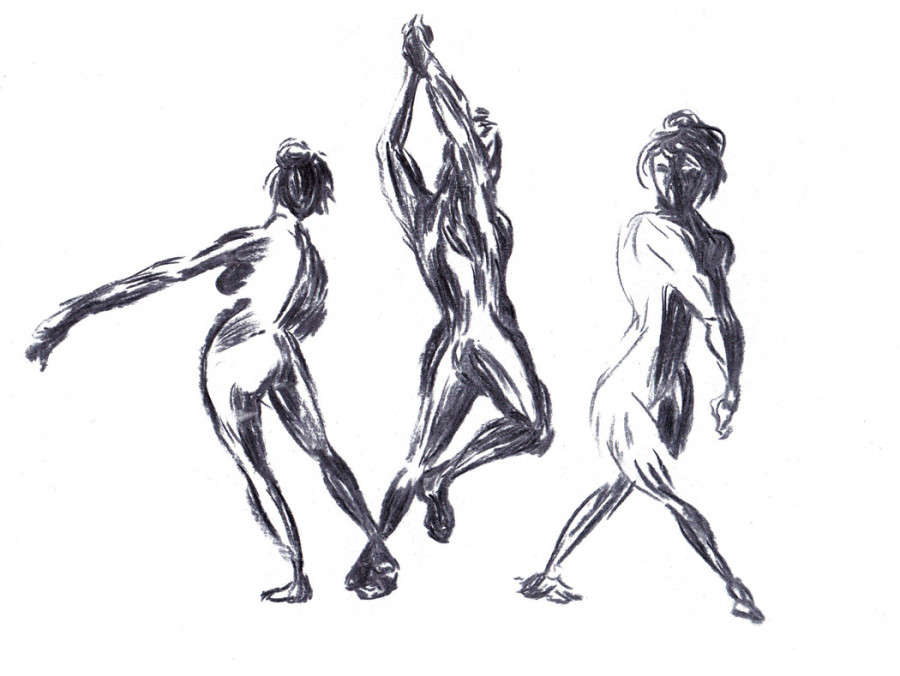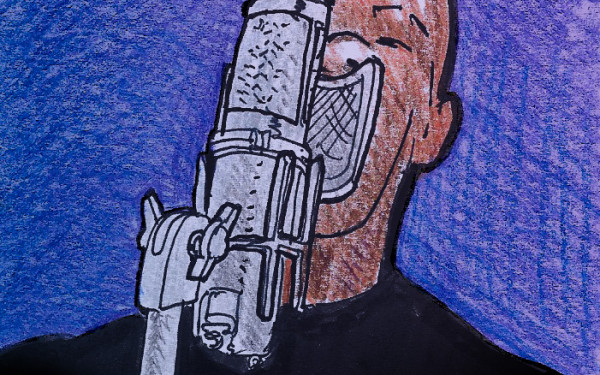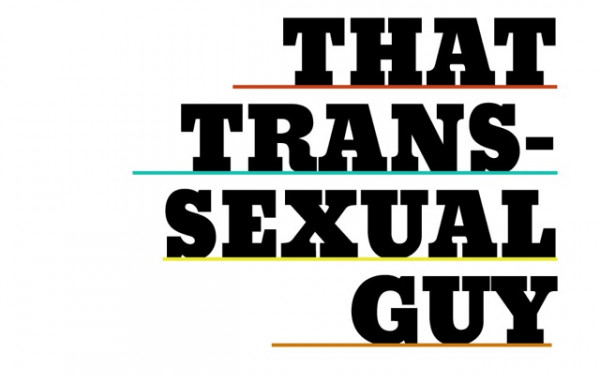Exploring the Expression of Poetry
The Mile End Poets’ Festival might give off the image of lines being read through thick rimmed glasses to an audience appreciative of snaps, but don’t let the name fool you.
The festival may be sponsored and put on by poets of the Mile End, but what it holds in store is much more diverse than that.
“We started it about three years ago and basically we wanted to do a festival that was poets, musicians and performers instead of just literature and that’s sort of what we’ve done ever since,” explained Ian Ferrier, a spoken-word artist and festival organizer.
Ferrier feels that a festival that offers more than words provides an audience with a richer and more approachable experience. This idea, along with his largely multimedia-based practice, has much to do with his education background.
“I went to a fine arts school so I was used to working with visual artists and all different kinds of people,” he said.
“It’s a nice mix because it just sort of clears your brain. One thing clears your brain for the other. Maybe you don’t want to listen to literature for 40 minutes but if you listen to it for 15, and then you get a musician, and then something else, and then you get a poet, then each time your mind is open and clear for what the next thing is.”
The festival not only focuses on breaking up the evening with different art forms; it also aims to combine them and celebrate the experience of blending. Many of the poets performing at the festival integrate music and other art forms directly into their words. This, as Ferrier explained, can be done in many different ways.
“There are so many different varieties of it,” he said. “In hip hop, it’s pretty clear that [the music and poetry] are pretty clearly connected; you’ve got a rap beat going all the way through. Whereas there are poets who use more ambient music and poets who use jazz background, you know?” he said.
“I do it a lot and the way I think of it is that if you think of a film, then the music is the soundtrack and the poetry is the image content.”
The combinations of music and poetry at the festival will be quite diverse. Poet Taqralik Partridge, for example, has worked directly with composer Guido Del Fabbro while poet and jazz musician Paul Serralheiro puts his own music into his work.
Dancing Like Darwin
Ferrier himself is a celebrated spoken-word artist with work that can be described best as “jazz poetry,” as UK Vibe artfully put it. In the past, acoustic guitar, whispered voice and even choir have accompanied his performances, but now his practice is entering a new realm.
“I don’t know if I define the practice that I do,” he said. “The reason I do things is because I get really absorbed by the idea of something. At the beginning, I’m not really sure what it is that’s so exciting about it and that’s where the exploration comes in.”
After working for a while with an improv group, Ferrier decided to explore the possibility of including choreographed dance in his works. His performance at this year’s festival will incorporate the group of female dancers he has been working with.
“They’re just beautiful to watch and you can’t take your eyes off them and that’s been the exciting part of working with them,” he said. “Also, the vocabulary is totally clear but it’s not verbal.”
It is certainly an interesting combination for an audience. Poetry provides the audience with words, leaving them to imagine the images themselves. Dance does the exact opposite; the images are there and it is up to the audience to determine the story.
The combination of the two gives the watcher and listener much more to interpret, along with the added task of deciding how it is the two aspects work together.
“The work we’re doing now is sort of structured as somebody’s exploration—an exploration in the way that Charles Darwin might have explored the world where you discover these amazing creatures,” he said.
“We specifically don’t create anything so that what they do exemplifies anything in the writing because we’re looking for more emotional resonances. Sometimes the two do come together and they’re both exactly the same thing, but it’s more like, ‘How does the vocabulary of actuality, which is what the dancers do, meet the vocabulary of imagination, which is what I hope happens in the mind of the audience?’”
Performances like those at the Mile End Poet’s Festival are done for an audience; however, the artist’s own intention cannot be ignored. According to Ferrier, it’s the intersection of the intention and the interpretation that makes for a successful piece.
“Say there’s something in my life,” he explained. “I saw an image or I saw someone or I saw something, that really fascinated me so I started to explore it and look into it and was wondering what made it so possible. In the course of that exploration I begin to get to the point where the piece that I do expresses the same kind of power or interest or wonder that got me into looking into [the subject] in the first place.
“When it gets that kind of resonance, when it’s doing whatever I had hoped to find when I went in to explore it at the beginning, then I think it’s beginning to express for an audience.”
Mile End Poets’ Festival // Vernissage // April 3 // Casa del Popolo (4873 St. Laurent Blvd.) // 8:30 p.m. // $7


_600_832_s.png)



3_600_375_90_s_c1.jpg)